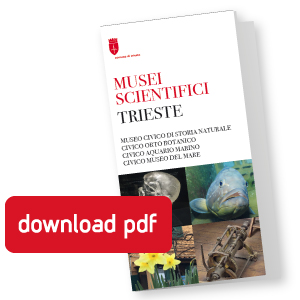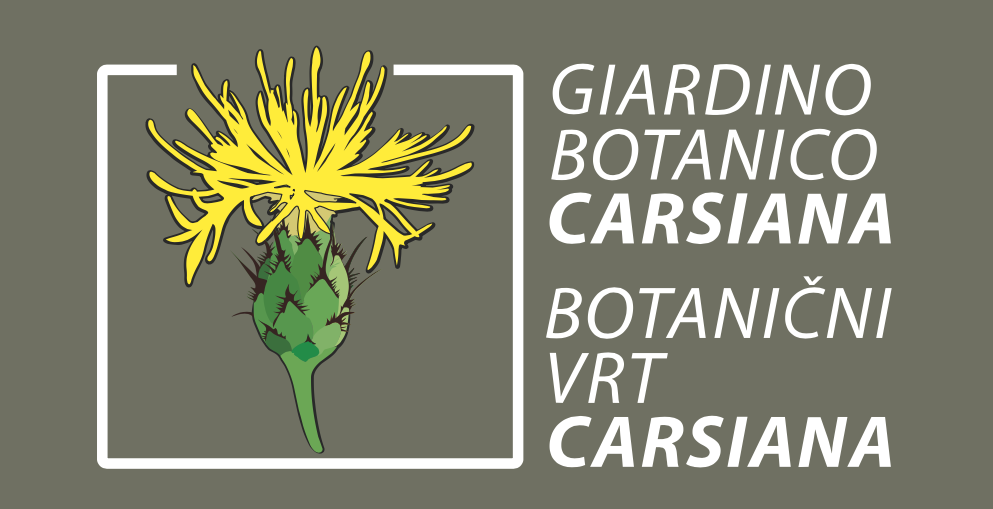
1. Wild plants
This section is undergoing development. A complete renewal of the historical flowerbeds will be carried out, with special emphasis on the most interesting species from
the Trieste, Istrian and surrounding regions.
2. Houseplants
At the beginning of the section dedicated to poisonous plants – the poisonous garden – the most widespread toxic or lethal houseplants are on display.
3. Ornamental plants
In the flowerbeds along the perimeter of the gardens there are several collections of ornamental plants (Hedera – ivy, Hydrangea – hydrangea, Hosta – hosta, Helleborus
– hellebore, Paeonia – peony, Rosa – rose, Viola – violet), as well as spring-flowering (Crocus – crocus, Galanthus – snowdrops, Eranthis – winter aconite) and autumnflowering
bulbs (Sternbergia – winter daffodil).
4. Anthology of magical plants
A flowerbed with a suggestively esoteric configuration, enriched with a stone fountain, a symbol of the trinity, is the site for a collection of the main plants with magical, religious and
mythological importance. Magic is a metaphor for mankind’s relationship with nature, the basis of the mental construction that man erects against the indefinite, a stimulus for knowledge regarding traditions often based on officinal powers or on taboo dictated by the real danger of the plant. It is not, therefore, an incentive for superstition.
5. Officinal plants
The layout of the garden dedicated to the officinal plants follows a systematic criteria (Pignatti, 1982). The choice of the species is based on the list of plants registered in
the Official Pharmacopoeia of the Italian Republic and integrated with those present in studies of ethnobotany of Friuli-Venezia Giulia (Lokar Poldini, Rossi), in historical
lists (Marchesetti) and in research regarding the officinal plants of the Austro- Hungarian coast (Tominz, 1881).
6. Lotuses
The ponds are home to various aquatic species, including lotuses (Nelumbo) in full bloom in July and August, with iridescent colours in shades of pink, white and yellow.
7. Edible plants
In response to research in edible wild plants it was decided to organise this area based on the various environments where the individual species grow, so
as to facilitate their recognition in nature.
8. Formal garden
The ordered flowerbeds bordered by the low box hedge are home to a number of collections of ornamental plants which bloom in different periods of the year. The genera,
represented here by a large variety of species, are Helleborus (hellebore – flowering period II-IV), Narcissus (daffodil – flowering period XI-V), Paeonia (peony – flowering
period III-V), Iris (iris – flowering period II-VII), Hydrangea (hydrangea – flowering period IV-IX), Hosta (hosta – flowering period V-VII), Rosa (rose – flowering period
V-X), and Salvia (sage – flowering period IV-XI).
9. Dye plants
The choice of dedicating a section to a collection of dye plants arises from the desire to display the main historical species used by dyers. Alongside these are the spontaneous plants of limited and local use, and the exotics which poorly tolerate Trieste’s harsh winters and need to be protected in the greenhouses.
10. Useful plants
Following the complete renovation of the facilities and the access to them, this section will host the main “plants of man” – those plants which for their various uses (nourishment, cosmetics, textiles) have shared the history and events of mankind.
11. The poison garden – path of the poisonous plants
This path with a guide is a close-up introduction to a number of poisonous plants. Scientific information is provided for each of them, along with peculiarities and uses. The path also aims to highlight the positive sides of the poisons: the pharmacological notes accompanying the plants indicate the therapeutic uses of the various toxins.








